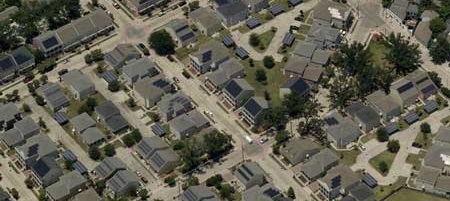Solar developers and financiers in the Northeast solar market currently experience a dilemma similar to Goldilocks’s as they try a taste of each state’s solar incentive programs to figure out which state’s program is “just right.”
Many developers and financiers have found themselves in this dilemma due to the ever-changing landscape of such programs (e.g. Massachusetts). Ask me about this dilemma five years ago, and the chart below would look significantly different.
Developers who found their “just right” porridge in a certain state five years ago are now finding that that same porridge may be getting a little hotter or a little cooler.
Now, most of these states fall into an unsurprising category. Maine, for example, is a no-brainer. It’s “too cold” and that is not just because of the frigid winters. You would be hard pressed to find even a handful of residential solar projects while driving around some of the more densely populated, wealthier income class neighborhoods and towns. Bowdoin College hosts the largest project in Maine at a huge capacity of 1MW. Well, I thought it was impressive when I was there, anyway.
Vermont, my home state’s rival, unfortunately, finds itself in the “too cold” category as well. The Vermont SPEED program is an effective and lucrative program but has limited solicitations, awarding a small amount of contracts each year. Outside of SPEED, developers can develop projects less than 500kW (AC) that qualify for Green Mountain Power’s solar adder incentive; however, investors tend to have a tough time swallowing these projects because of the floating retail rate associated with a project’s Solar Service Agreements. A fixed adder of $40/MWh for 10 years is attractive, but not when the remainder of the credit is determined by a floating retail rate. So even with high electricity prices and a lucrative incentive program, developers in the Green Mountain State are eating cold porridge.
Rhode Island sits in the “too cold” category as well due to its inability to attract and develop the state’s original goal of 40MW by 2014. The state finished out last year with 15MW of solar projects under development and awarded contracts, but that left nearly 25MW to be fulfilled by a “new” program. The Rhode Island Public Utility Commission was then tasked to develop the state’s next lucrative solar program to fulfill this outstanding capacity. And in early April 2015, the RI PUC announced their approval of the Rhode Island Renewable Energy Growth Program, which aims to make 25MW of capacity available for competitively bid incentives in 2015. The Program is expected to open for small scale projects in June and commercial scale projects in July.
New York, on the other hand, finds itself in the “too hot” and “too cold” category, giving the same porridge to two radically different types of projects. The new Megawatt Block Program (MW Block) for projects over 200kW, to be released at the beginning of May, will not provide the full incentive support necessary to make projects pencil on the rooftops – while driving a land rush for remote net metering (RNM) systems. With retail electricity rates as low as they are in New York, especially upstate, a slightly higher incentive starting incentive rate for the MW Block program – and a wall between RNM and rooftop systems would push New York into the “just right” category; unfortunately, we don’t see that happening any time soon.
New Hampshire may come as a surprise, falling into the “too hot” category. The $0.65-0.75/Watt incentives provided through the NH PUC’s C&I Solar Rebate Program are incredibly lucrative for a solar project in the Granite State that already is seeing rather high retail electricity rates. However, the strict and cumbersome application requirements, limited capacity (only $4.6 million in funding), and once a year solicitation will limit the impact. Maybe a shot glass of burning hot porridge?
The Connecticut ZREC Program fits into a similar category as New Hampshire’s rebate. It is an attractive solar incentive for a wide variety of projects but is a once a year solicitation with a limited amount of funding. The program gets placed in the “too hot” category because it provides a lucrative incentive that has spurred a lot of development in the state, but the program does not create the consistency and stability to keep that demand satisfied.
Finally, the last state that should be sitting “just right”, but has found itself in the red zone is Massachusetts. The Bay State would have maybe fit perfectly into the “just right” category until about a month ago when the net metering caps in National Grid territory were hit for both the public and private sectors. Now, many companies have gears to the tougher NSTAR territory projects until new regulation and legislation either increases the caps permanently — or creates a new incentive structure to eliminate the necessity of such caps. Even with this development slowdown, Sol Systems still lists the Bay State as “too hot” due to the high value of SREC prices and retail electricity prices that make the projects that are still floating around very lucrative to an investor. Stay tuned, however, for a post-summer 2015 evaluation of this same Goldilocks issue when the Massachusetts legislature hopefully passes a short term and viable solution. With any luck, legislation will establish an effective way forward for managing the net metering caps while the industry awaits the launch of the next in January 2017.
Published with permission from the original publication on Sol Systems Blog By Anna Noucas.












Comments